The formation of MEP and the 1956 Revolution
by W.T.A. Leslie FERNANDO
With the split in the LSSP in October 1953, except for Dr. N.M.
Perera and Robert Gunawardena, all the leaders who remained in the party
like Dr. Colvin R. de Silva, Leslie Gunawardena, Doric de Souza, Edmund
Samarakkody and P.B. Tampoe were former members of the Bolshevic Lennist
Party. Dr. Perera was the leader of the LSSP. Robert at that time had a
fervent faith in a Revolution.
 |
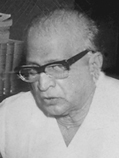 |
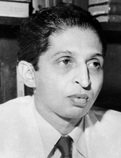 |
| Dr. Colvin R. de Silva |
Dr. N.M.Perera |
Edmund Samarakkody |
On the other hand except for a few like William de Silva, Henry
Peiris and L.W. Panditha, most of the others in the breakaway group like
T.B. Subasinghe, Reggie Perera, D.F. Hettiarachchi, K.P. de Silva, V.A.
Samarawickrema, K.A.E. Britto, Sagara Palansuriya, Saviman Gunatilleka
and M.S. Bakmiweva were former LSSPers before the merger of the LSSP and
BLPI in 1950.
During this time Philip Gunawardena gravitated from subscribing to
basic Marxist tenets of the need for a dictatorship of the proletariat
to a position which recognised to go beyond the working class and rural
labourers and ally with other social formations in rural Sri Lanka. At
the same time the Hela Havula members of the VLSSP like Santiago
Fernando, W.M. Perera and Saviman Gunatilleka along with patriots like
Sagara Palansuriya and Prins Gunasekera, directed the party towards a
national outlook.
In late 1954, there was a strong agitation in the country led by the
Maha Sangha, that Sinhala should be made the State language in Sri
Lanka. At the Hela Havula conference held in December 1954, Santiago
Fernando, a central committee member of the VLSSP moved that Sinhala
should be made the official language in place of English. This was given
wide publicity in all the journals.
The Communist leader who saw the news item complained that the move
by Santiago Fernando violated the policy of the CP-VLSSP United Front.
The CP at this time stood for parity for Sinhala and Tamil. Philip
Gunawardena maintained that the policy of the VLSSP was to make Sinhala
the official language while making Tamil the regional language in the
North and in the East. This controversy led to the break down of the CP-VLSSP
United Front.
Even before that the differences were brewing between the VLSSP and
the CP. The VLSSP alleged that the CP was trying to get members of the
VLSSP, especially the harbour workers to its fold by various
inducements. Accordingly the beginning of 1955 saw the end of the CP-VLSSP
United Front.
In the meantime some like Stanley Tillekeratne, K.P. de Silva, K.A.E.
Britto and V.A. Samarawickrema who broke away from the LSSP and joined
the VLSSP embraced the CP. However, majority of the breakaway group like
William de Silva, D.F. Hettiarachchi, Sagara Palanasuriya, Saviman
Gunatilleke and M.S. Bakmiweva remained in the VLSSP. So VLSSP was a
force to reckon with.
At this stage Philip Gunawardena tried to form a united front of the
VLSSP and the LSSP. In fact, the LSSP and the VLSSP held a joint May Day
Rally in 1955 on a grand scale. The CP did not like both the LSSP and
the VLSSP gaining ground by such a unity. It published an account of the
properties and shares owned by the leaders of the LSSP in 'Mavubima' the
official organ of the CP with the title 'Baduth Ekka Horu' (The rogues
with stolen goods).
What the Communist Party attempted to indicate was that though the
LSSP leaders talked big about socialism, in reality they themselves were
capitalists who exploited people. Anyhow the unity between the LSSP and
the VLSSP did not last long because of the conflict in the language
policy. The LSSP stood for parity for Sinhala and Tamil. The VLSSP
advocated Sinhala as the official language with Tamil as regional
language for North and East.
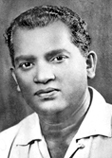 |
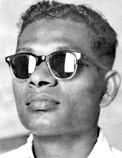 |
| Robert Gunawardena |
Reggie Perera |
By the latter half of 1955 there was a Buddhist resurgence in view of
2500 years the Buddha Jayanthi in 1956. At the same time there was a
movement among the Maha Sangha to regain the legitimate rights of the
Buddhists that have been lost. It was in this background that the
Buddhist Commission Report was released.
The combined effect of all these set the background for a renaissance
in Buddhism and revival of the Sinhala language and culture. At this
time Sir John Kotelawala made a declaration at the Delft Island in the
North, that he would make both Sinhala and Tamil official languages.
This evoked protests from the Maha Sangha who insisted that only Sinhala
should be made the official language. The LSSP and the CP that advocated
parity for Sinhala and Tamil elicited some harassment, from some Sinhala
people.
In this situation by the end of 1955 the LSSP entered into a
no-contest pact with the SLFP conceding majority of seats to the SLFP.
the LSSP leaders later justified this step indicating that according to
the language and religious issues prevalent at the time LSSP could
hardly face the Sinhala masses without rousing hostility and it had no
chance to bid for a government.
At this time the SLFP adopted Sinhala Only as its language policy.
The VLSSP too deviated from Marxist polemics and joined the non-Marxist
parties like the SLFP, Basha Peramuna and some independents to form the
Mahajana Eksath Peramuna. The MEP pledged to implement the proposals of
the Buddhist Commission Report and got the blessings of the Maha Sangha.
With these developments the UNP too adopted a resolution to make
Sinhala only as the official language. As a result the Tamil MPs left
the UNP. Nevertheless Sir John Kotelawala decided to go to people for a
mandate and dissolved parliament to hold a general election.
In the 1956 general election, the MEP was the main rival of the UNP.
The 21 point programme of the MEP aimed at a socialist state while
reviving our spiritual and cultural values. S.W.R.D. Bandaranaike was
the leader of the MEP. He was a charismatic leader who appealed to
people more than Sir John Kotelawala, the leader of the UNP. Philip
Gunawardena, the well known socialist was another protagonist of the MEP
and he gave a progressive outlook to it.
At the 1956 election, the combination of Maha Sangha, native doctors,
teachers, peasants and workers known as the 'Panch Maha Balavegaya'
rallied round the MEP. In this election for the first time the
candidates were alloted symbols according to their political party. The
UNP got the elephant and the MEP selected the hand. The key was the
symbol of the LSSP and the CP obtained the star. Although the MEP and
the LSSP campaigned separately, at the meetings Dr. N.M. Perera, the
leader of the LSSP promised that the LSSP would give the key to the hand
of S.W.R.D. Bandaranaike to form the next government.
The general election of 1956 was held spread out for 3 days. On the
first day UNP could win only 8 seats out of 41 electorates it contested.
It could not win a single seat on the next two days. The UNP which
contested 76 seats in 1956 could win only 8 and suffered a humiliating
defeat.
The MEP won 51 out of 60 it contested and recorded a convincing
victory. The LSSP contested 21 seats and won 14 out of them. The Federal
Party which contested 14 electorates won 10 seats. The Communist Party
which contested 9 electorates could win 3 seats.
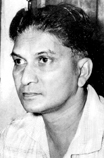 |
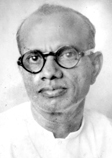 |
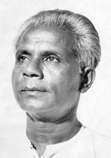 |
| Leslie Gunawardena |
Sagara Palansuriya |
W.M.Perera |
On April 12, 1956 S.W.R.D. Bandaranaike, the leader of the MEP formed
the government and became the Prime Minster. His cabinet comprised 14
Ministers. The two VLSSPers, Philip Gunawardena the leader of the party
was made the Minister of Agriculture and Food, and William de Silva
became the Minister of Industries and Fisheries. As the LSSP got the
majority of seats in the opposition Dr. N.M. Perera was made the Leader
of the Opposition.
Although Sri Lanka became an independent country in 1948, morally and
culturally it did not appear to be a free nation. The rulers at the time
followed the British in their ideas and ideals, way of life, dress,
economic structure and the outlook. It was said that the country changed
hands from the white Sahibs to the brown sahibs.
It was only after 1956 that Sri Lanka appeared to be an independent
nation. The Ministers of the MEP took their oaths in the national
costume at the request of the Maha Sanga. There was a social and
cultural revolution all over the country that generated a national
outlook.
Martin Wickremasinghe identified the 1956 Revolution as the fall of
the Brahamin regime. S.W.R.D. Bandaranaike claimed himself as the
midwife of the 1956 transition.
S.W.R.D. Bandaranaike was the person who understood the pulse and the
aspirations of the people in Sri Lanka and directed them towards the
1956 Revolution.
|

